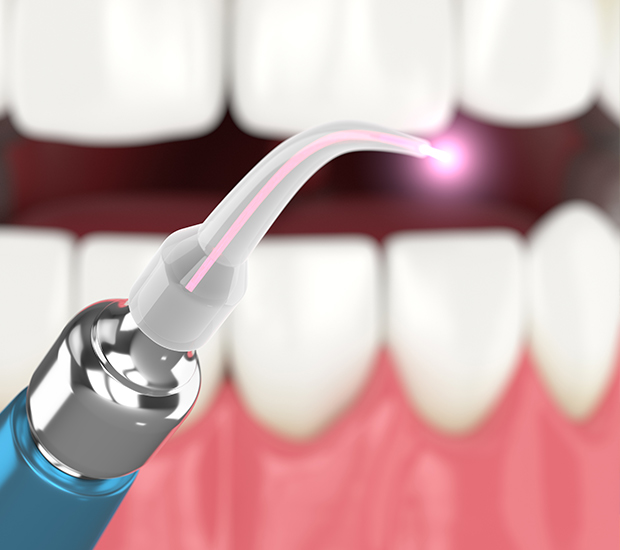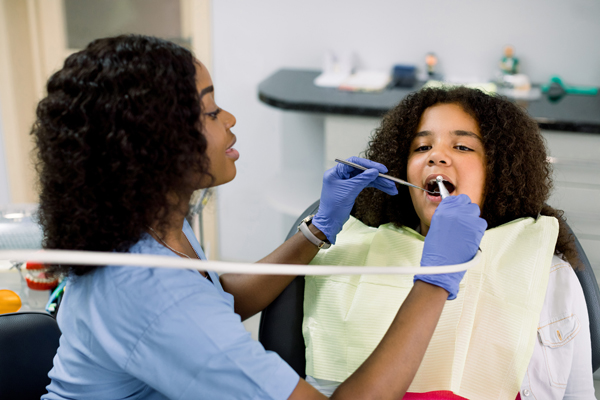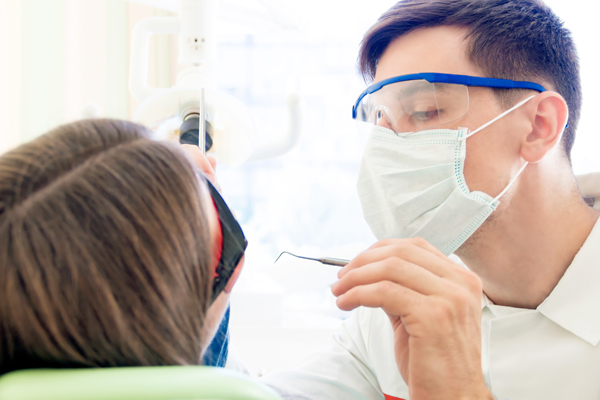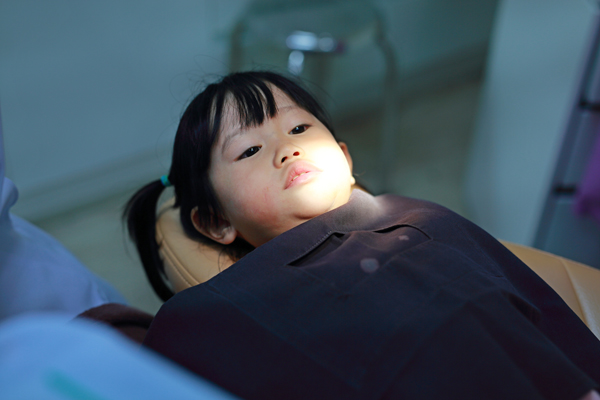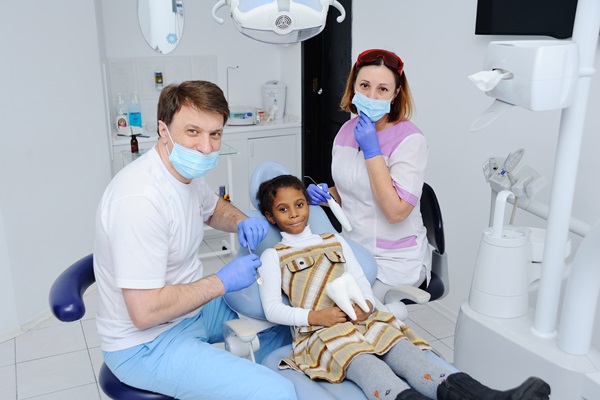Laser DentistrySuffolk, VA
Laser dentistry has revolutionized many aspects of the dental industry, especially in pediatrics, where quick and pain-free treatments mean more comfortable and satisfied patients. Laser therapy gives dentists the ability to treat various oral conditions with precision and accuracy that traditional dentistry lacks. Pediatric dentists are always looking for ways to enhance their young patients’ dental experiences by providing comfort, speed, and prevention.
At Fun Park Pediatric Dentistry, we provide laser technology in almost all of our preventative therapies and techniques. Our team has extensive training in the use of laser technology, the tools, and equipment needed for the safety of everyone involved. We focus on parental involvement and inform parents every step of the way to allow for comprehensive treatment in-office and at-home. To learn more about our services or schedule an appointment, call (757) 767-2767 today.
Laser Dentistry: What It Is
LASER stands for “light amplification by the stimulated emission of radiation.” Laser dental treatments allow us to perform precise procedures using an instrument that emits an intense, concentrated beam of light energy. The laser device is easy to control and can painlessly cut or vaporize tissue on contact, perfect for removing or shaping tissue. It can also eliminate decay in teeth or remove soft tissue from gingival mucosa(gums).
Laser dentistry can be used for various dental procedures, including treating tooth decay, and gum disease. According to Healthline, laser dentistry is an FDA-approved treatment option and can be more efficient, cost-effective, and comfortable. Laser treatments are especially useful when treating young children who may be fidgety or afraid of rough dental tools and drills.
Tissue Treatments
A study on laser dentistry found the two most common types of laser treatments, soft tissue (gums) and hard tissue (teeth), to be the most effective.
Soft-tissue Procedures
Soft-tissue procedures include tongue-tie treatment, ablation of ulcers, operculectomy surgeries, pulpectomies, root canals and collagen shrinkage of floppy posterior soft tissue in alleviating sleep apnea. Tongue-tie treatment uses laser technology to cut a small, precise excess tissue that attaches the tongue to the floor of the mouth, usually in babies and young children.
Hard-tissue Procedures
Hard-tissue procedures include cavity detection, dental fillings, tooth extraction. Lasers have cavity detection capabilities and can find evidence of tooth decay early with optical coherence tomography. Often, laser treatments do not need local anesthesia or traditional drills and can eliminate the bacteria in a cavity, making dental fillings much easier and pain-free. Tooth sensitivity is treated by sealing the tubules on the tooth’s root.
Non-Tissue Treatments
Laser technology has a variety of other uses in dentistry, including:
- Removing benign tumors from palate, gingival mucosa(gums), and sides of lips/cheeks
- Treating obstructive sleep apnea by reshaping tissue-overgrowth in throat
- TMJ treatment to reduce pain or inflammation in joints
- Nerve regeneration in damaged blood vessels or nerves
- Teeth whitening by speeding up bleaching process
- Treating cold sores
Benefits of Laser Dentistry
Laser dentistry has seen an upward trajectory in terms of success rates involving dental treatments compared to traditional methods. Laser instruments are effective yet gentle on hard-tissue treatments as dentists forego drills and injections. Much of children’s discomfort, pain, and negativity towards dentists stems from anesthesia and the drilling process. Soft-tissues also respond well to lasers because of their precision and thin, narrow beams.
Laser technology has also advanced gum disease treatment as precise wavelengths of light contour along the gum line. The laser’s thin beam exerts just enough light energy to remove excess tissue without damaging the gingival mucosa(gums). Along with vaporizing the tissue quickly and gently, lasers eliminate harmful bacteria underneath the gingival mucosa(gums) or pockets around the teeth.
The laser’s thermal energy promotes circulation and aids in more rapid healing. This allows laser devices to treat infections in root canals. The high-intensity beams remove diseased pulp tissue in the core and clear out all bacteria from the tiny canals that travel from the crown to the jawbone. The laser energy produces an antiviral effect that precise root canal therapy needs.
Laser Therapy for Children
Advancements in laser therapy have greatly enhanced the prevention of disease and the preservation of children’s primary teeth and gingival mucosa(gums). As baby teeth and gingival mucosa(gums) are still growing and shifting, they can become permanently damaged or decayed from poor dental treatment. Laser technology has allowed dentists in micro dentistry to perform various treatments on children without removing too much tooth structure or developing tissue.
The American Academy of Pediatric Dentistry (AAPD) recognizes the use of lasers for providing soft and hard-tissue dental procedures for children, adolescents, and children with special health care needs. It asserts that laser therapy enhances children’s perception of dental treatment as little to no anesthesia is required for most treatments, wound healing occurs more rapidly, and chair time is significantly reduced.
Call Us Today
Laser technology is available for most of our treatments. Our team at Fun Park Pediatric Dentistry look forward to giving your child a pain-free and speedy treatment. Call our office at (757) 767-2767to learn more or schedule an appointment.
Frequently Asked Questions About Laser Dentistry
Are lasers used in place of dental drills?
Lasers can be used instead of a drill but have many other uses and functions. The primary difference is that lasers are more efficient, quick, and comfortable. Patients experience less pain and damage to healthy tissue, bone, and teeth structure, reduced bacteria levels, and often no required anesthesia. They are also safer than drills and offer decreased healing time.
Is laser dentistry safe?
Laser dentistry is found to be safer than traditional or manual dentistry because of its modern technology and advancements in dental instruments. Proper measures, such as the use of safety tools and equipment, must be taken in order to treat young children. With authorized training, experience, and performance, dentists can operate on infants as young as a few days old using laser technology.
How long do laser dental procedures take?
The severity of the patient’s condition determines the length of treatment. The majority of treatment time focuses on removing plaque and tartar, while the laser portion only takes a few minutes. During the consultation, we will discuss the entire treatment and the anticipated duration.
Can laser treatment prevent tooth extractions?
Laser therapy, can save teeth because of its cavity detection capabilities especially in young children. However, each patient has a unique case and laser treatment may not work in saving their teeth. This will be discussed during the consultation appointment prior to treatment.
What are the most common uses for lasers in pediatric dentistry?
Lasers are most commonly used for cavity prevention, preparation of a filling, and hardening a filling. Most treatments on young children involve the prevention of tooth and gum decay or the prevention of further decay. Lasers can also be used for more invasive treatments in children, such as tongue-tie surgery, baby root canals, and restorations.
How does laser dentistry help with dental phobia?
Most children are afraid of the dentist or dental treatments because of the sound of the drills and the numbing shot. Laser dentistry tackles both of those factors as most treatments use neither. Our patients also experience less pain post-treatment because there are no vibrations and gum tissue bleeds and swells less.
Contact Us
Fun Park Pediatric Dentistry is located at
1009 Centerbrooke Ln Suite 210
Suffolk, VA 23434
